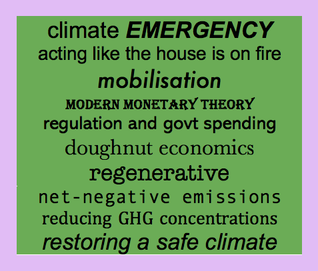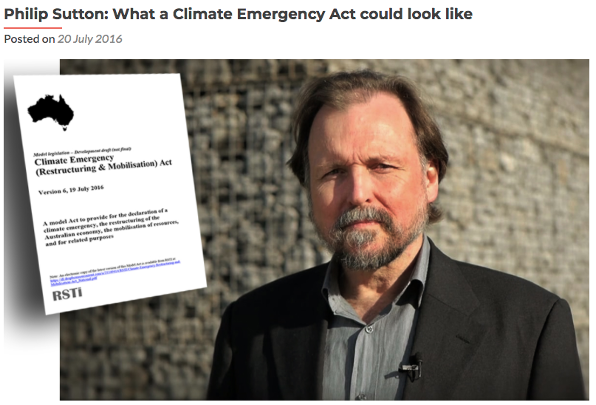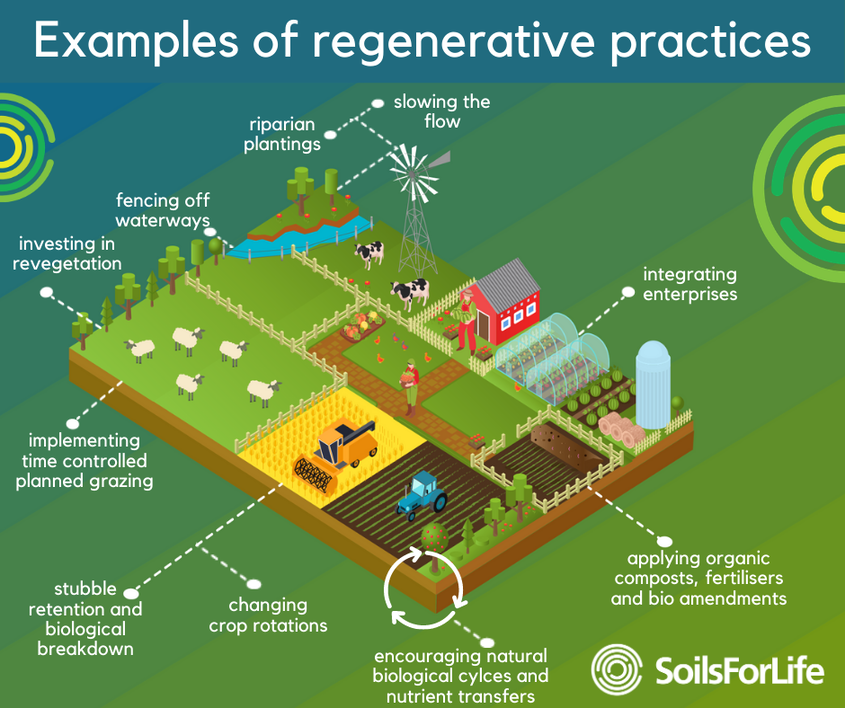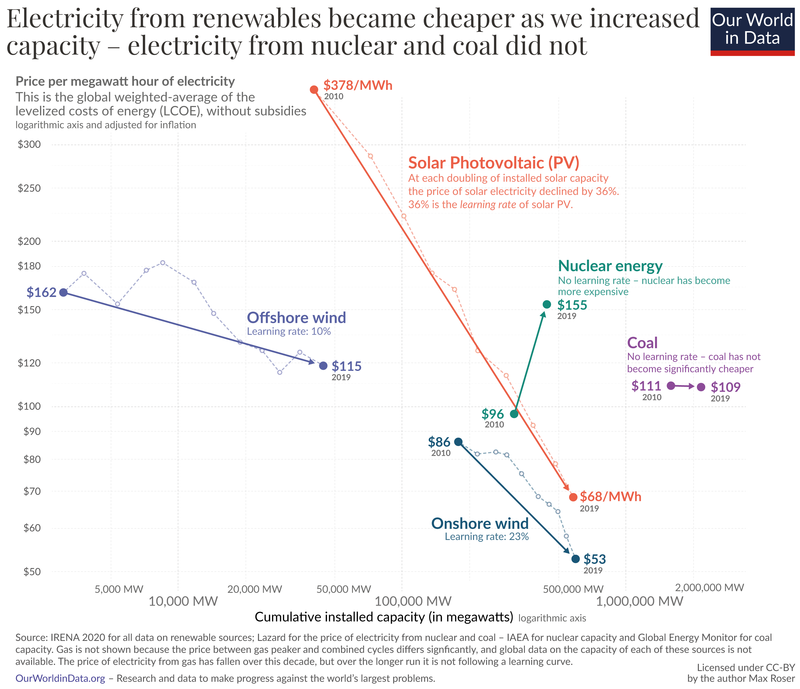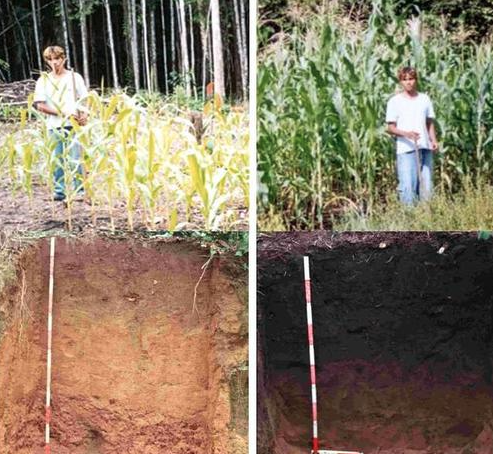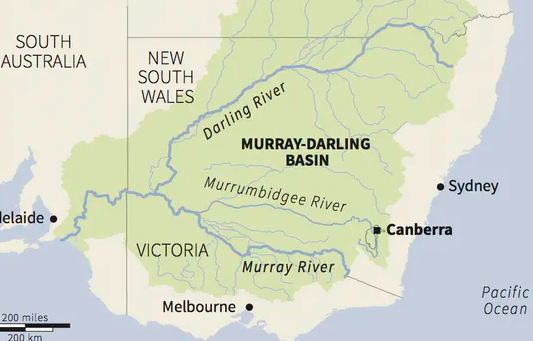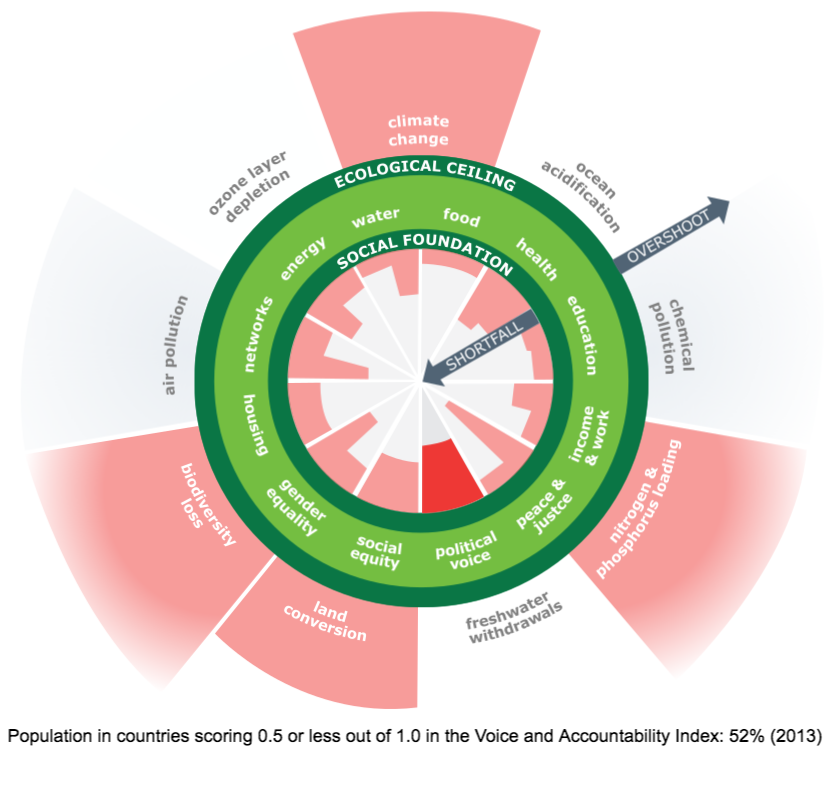Climate Emergency Action Alliance-Vote Planet has a climate emergency platform without a safe climate we cannot create a world where our children can thrive.
|
Climate emergency means prioritising emergency action (mobilising all three levels government as well community and business) to restore a safe climate. The image on the left summarises what we mean by climate emergency mobilisation. Read Why Emergency? for more detail.
The Vote Planet alliance is founded on four goals centred on global warming, environment, economics and democracy, and these goals are underpinned by policy positions. Click in each policy for more detail. Note that policies under each goals reinforce the other goals and their policies. |
Candidates may have their own positions on issues beyond the four goals and policies outlined.
GOAL 1: REVERSE GLOBAL WARMING / RESTORE A SAFE CLIMATE
All levels of government implement, as their number one priority, the restoration of a safe climate and non-acidic oceans aiming for pre-industrial levels of greenhouse gases and ocean acidity at emergency speed in order to avoid an ecological and social collapse, while maximising the preservation of human and non-human life.
All levels of government implement, as their number one priority, the restoration of a safe climate and non-acidic oceans aiming for pre-industrial levels of greenhouse gases and ocean acidity at emergency speed in order to avoid an ecological and social collapse, while maximising the preservation of human and non-human life.
PAss a climate emergency and mobilisation act
|
Without appropriate restructuring of government, a climate emergency response is not possible at the speed and scale required; economic signals cannot deliver what is needed. However, most of the individual policies below are still possible without the Act. Read the draft Climate Emergency Restructuring and Mobilisation Act here.
Vote Planet would seek to introduce a Climate Emergency and Mobilisation Act into parliament as a first step. The Act bestows emergency powers on government authorising it to do what is needed. It also restructures government to prioritise and mobilise climate emergency action. In the absence of an Act, we need to push forward wherever possible, but point out where steps in "the right direction" are inadequate and frankly suicidal. |
IMPLEMENT TRANSITION PLANS TO ZERO EMISSIONS ACROSS ALL SECTORS
Carbon taxes and economic signals alone are too slow to stop the climate emergency. Governments have the power to regulate the fossil fuel industry and the industry has already been on notice for over 30 years.
Moreover, we already possess almost all of the plans to transition at emergency speed, thanks to thinktanks such as Beyond Zero Emissions. With public subsidy and appropriate regulation, these transition plans can be implemented.
The first step is to immediately cease everything bad we are doing including fossil fuel extraction and native logging and land clearing. Government may need to take a stake in some companies and industries to achieve a just transition for workers. Vote Planet policy also includes a job guarantee, which would assist this transition.
The next step is to implement the transition plans below for land use, stationary energy, transport, energy efficient buildings. Some of these are described in more detail below.
We can afford all the changes recommended here, and more people than ever will have quality jobs. See Goal 4 / Apply Modern Monetary Theory to budget management below for how we would pay for this.
Why a price on carbon alone can't drive the transition needed
We need a plan and a framework to get the best outcome for individual communities. The market can't provide all the changes needed, the same way market signals could not have prepared us for COVID-19 or WWII. Centralised control is needed to guide us through what would become chaos if left to the market.
Rather than setting a high carbon price (eg $300+ a tonne) but leaving fossil fuels and other major sources of warming on the table, the window would close on these during the transition years.
A price on carbon may be relevant in areas such as imported material goods, it all depends on the overall policy settings.
Why absolute zero over net zero?
A net zero target allows the nation to focus on the low hanging fruit, such as stationary energy, and ignore areas that will be harder to transition, such as transport and land use. A net zero target also allows for questionable offset accounting.
We need to focus on sequestering CO2 at the same time we race to absolute zero, but this sequestration should not come at the expense of slowed emissions reductions.
Moreover, we already possess almost all of the plans to transition at emergency speed, thanks to thinktanks such as Beyond Zero Emissions. With public subsidy and appropriate regulation, these transition plans can be implemented.
The first step is to immediately cease everything bad we are doing including fossil fuel extraction and native logging and land clearing. Government may need to take a stake in some companies and industries to achieve a just transition for workers. Vote Planet policy also includes a job guarantee, which would assist this transition.
The next step is to implement the transition plans below for land use, stationary energy, transport, energy efficient buildings. Some of these are described in more detail below.
We can afford all the changes recommended here, and more people than ever will have quality jobs. See Goal 4 / Apply Modern Monetary Theory to budget management below for how we would pay for this.
Why a price on carbon alone can't drive the transition needed
We need a plan and a framework to get the best outcome for individual communities. The market can't provide all the changes needed, the same way market signals could not have prepared us for COVID-19 or WWII. Centralised control is needed to guide us through what would become chaos if left to the market.
Rather than setting a high carbon price (eg $300+ a tonne) but leaving fossil fuels and other major sources of warming on the table, the window would close on these during the transition years.
A price on carbon may be relevant in areas such as imported material goods, it all depends on the overall policy settings.
Why absolute zero over net zero?
A net zero target allows the nation to focus on the low hanging fruit, such as stationary energy, and ignore areas that will be harder to transition, such as transport and land use. A net zero target also allows for questionable offset accounting.
We need to focus on sequestering CO2 at the same time we race to absolute zero, but this sequestration should not come at the expense of slowed emissions reductions.
LAND USE TRANSITION
Land use transition for zero emissions is captured in Goal 1 under the policies relating to
- reforestation/revegetation and returning wetlands
- regenerative farming practice, and
- ceasing native forest logging and land clearing
- land use drawdown.
INCENTIVISE reforestation, revegetation and returning wetlands on private land
Forests, vegetation and wetlands are responsible for huge amounts of carbon dioxide sequestration. When we destroy these complex ecosystems, sequestered carbon is released as carbon dioxide. We need to restore these ecosystems for their carbon dioxide drawdown capacity and for other environmental benefits resulting.
Beyond Zero Emissions found that if Southeastern forests were allowed to regrow, 7,500 million tonnes of carbon dioxide could be sequestered (this is 14 times Australia's emissions in 2019).
See also 'Rehydrate Australia...' under Goal 2 below.
Beyond Zero Emissions found that if Southeastern forests were allowed to regrow, 7,500 million tonnes of carbon dioxide could be sequestered (this is 14 times Australia's emissions in 2019).
See also 'Rehydrate Australia...' under Goal 2 below.
Agriculture
Fifty five percent of Australian land is classed as agricultural. We need to activate the potential of this land not only to build agricultural resilience but also to activate drawdown for the climate emergency by doing the following.
Provide incentives for regenerative farming practice:
- increase in soil carbon (satellite measurement)
- local hubs for learning and knowledge sharing.
Stop land clearing.
There is also great potential in securing our food systems by investing in "lab grown" food and food grown in controlled environments. This includes:
- lab grown meat
- cultivating insects
- cultivating algae as a food source as well as for biofuel.
Provide incentives for regenerative farming practice:
- increase in soil carbon (satellite measurement)
- local hubs for learning and knowledge sharing.
Stop land clearing.
There is also great potential in securing our food systems by investing in "lab grown" food and food grown in controlled environments. This includes:
- lab grown meat
- cultivating insects
- cultivating algae as a food source as well as for biofuel.
Basic principles of regen ag / building resilience farming (Source: Soils for Life)
Paradigm shift to farm management
Regen Ag basic principles
Application in an Australian context (Western NSW)
CEASE Native forest logging and land clearing
Logging results in at least 94% of a forest’s stored carbon ending up in the atmosphere. A maximum of 6% of its carbon remains in sawn timber, for up to 90 years (but typically much shorter). This is patently counterproductive from a carbon-storage point of view. In Victoria alone, Victoria has about 7.6 million hectares of native forests and 1.82 million hectares is allocated for logging by VicForests. Areas allocated for logging are often those with the most mature trees and ecosystems. The Conversation busts some prevalent native forest logging myths in this great summary. To put it in crude monetised terms, the value of a forest is worth much more as a carbon sink and for tourism than its timber is worth. To put it in crude monetised terms, the value of a forest is worth much more as a carbon sink and for tourism than its timber is worth.
On government owned land, fully resourced Indigenous Ranger programs in collaboration with paid Local indigenous knowledge holders would be sought to develop Area Conservation and Restoration Plans authorised under an appropriate government agency. Fully resourced Indigenous Ranger programs, junior rangers, and paid Local indigenous knowledge holders would be properly resourced to implement the Area Conservation and Restoration Plans and manage each Area going forward.
On government owned land, fully resourced Indigenous Ranger programs in collaboration with paid Local indigenous knowledge holders would be sought to develop Area Conservation and Restoration Plans authorised under an appropriate government agency. Fully resourced Indigenous Ranger programs, junior rangers, and paid Local indigenous knowledge holders would be properly resourced to implement the Area Conservation and Restoration Plans and manage each Area going forward.
Close the Loop and reduce Consumption
Closed loop means nothing is introduced or lost in a closed system. Everything has value and materials are 100% recyclable and 100% reused or recycled. This shift introduces a swathe of new industry. Ostensibly, we could replace all, or the vast majority, of required materials currently used in manufacturing processes with recyclable and reclaimable materials.
Achieving closed loop is of course complicated by foreign trade and some appalling trade agreements our government has signed us up to; however, Australia can begin at home. We can start by:
Achieving closed loop is of course complicated by foreign trade and some appalling trade agreements our government has signed us up to; however, Australia can begin at home. We can start by:
- reviewing these trade agreements to accommodate closed loop processes
- starting our own manufacturing sector
- growing a sector responsible for the reclamation of resources.
stationary energy
Transitioning the grid to 100% renewables is low hanging fruit
In 2010, Beyond Zero Emissions released a 10-year comprehensive and costed transition plan for a grid powered by 100% renewables. You can watch Malcolm Turnbull launching the plan below. In 2009, the transition plan was costed at an additional $8 per household per week. In the past 11 years, the cost of renewable energy has dropped dramatically and power generation and storage options have multiplied. Beyond Zero Emissions has gone about replacing the national plan with a number of smaller plans focused on hubs and industries.
Storage
Storage is the a key issue for a transition to 100% renewables. While lithium batteries are often modelled, there is not enough lithium for a global transition at the scale required so such resources should be used sparingly. Beyond Zero Emissions relies heavily on concentrated solar thermal (molten salt) for grid stability. Other potential and emerging options for storage include stacked blocks, compressed and liquid air. Other options are listed here.
In 2010, Beyond Zero Emissions released a 10-year comprehensive and costed transition plan for a grid powered by 100% renewables. You can watch Malcolm Turnbull launching the plan below. In 2009, the transition plan was costed at an additional $8 per household per week. In the past 11 years, the cost of renewable energy has dropped dramatically and power generation and storage options have multiplied. Beyond Zero Emissions has gone about replacing the national plan with a number of smaller plans focused on hubs and industries.
Storage
Storage is the a key issue for a transition to 100% renewables. While lithium batteries are often modelled, there is not enough lithium for a global transition at the scale required so such resources should be used sparingly. Beyond Zero Emissions relies heavily on concentrated solar thermal (molten salt) for grid stability. Other potential and emerging options for storage include stacked blocks, compressed and liquid air. Other options are listed here.
|
The chart below maps the global cost of renewables per megawatt hour against changes in capacity. All renewables drop dramatically as they grow in scale, whereas nuclear increases in price and coal cost remains the same.
|
|
Source: Our World in Data
Transport
Beyond electric vehicles, electric rail and light rail, there is so much promising tech for different types of zero emissions transport including hydrogen driven options. We just need to speed up their testing and roll out at scale.
People moving
Los Angeles has already mapped a plan to zero emissions transport by 2028. Beyond Zero Emissions has developed Australian 10-year transition plans for electric vehicles and fast rail from Melbourne to Brisbane (Melbourne to Sydney is one of the world's busiest short flight routes) while the Musks and Bransons of this world continue to push the develop edge with transport projects such as a hyperloop.
While long haul zero emissions flight is some way off, it will soon be viable for shorter flights with recent development of electric planes, plane biofuel and a hydrogen based fuel for aircraft.
Freight moving
Across land, many of the people moving options are also relevant to freight such as electrified rail. Across water hydrogen and other options will soon become available for cargo but we need to speed up availability.
People moving
Los Angeles has already mapped a plan to zero emissions transport by 2028. Beyond Zero Emissions has developed Australian 10-year transition plans for electric vehicles and fast rail from Melbourne to Brisbane (Melbourne to Sydney is one of the world's busiest short flight routes) while the Musks and Bransons of this world continue to push the develop edge with transport projects such as a hyperloop.
While long haul zero emissions flight is some way off, it will soon be viable for shorter flights with recent development of electric planes, plane biofuel and a hydrogen based fuel for aircraft.
Freight moving
Across land, many of the people moving options are also relevant to freight such as electrified rail. Across water hydrogen and other options will soon become available for cargo but we need to speed up availability.
energy efficient building retrofits and construction
Beyond Zero Emissions The Million Jobs Plan Better Buildings initiative creates 180,000+ on-going jobs and reduces the cost of living for 2.65 million Australian households. The key points of the plan are:
Earlier 2013 modelling by Beyond Zero Emissions had shown that such a transition:
Video shows the outlines Power Ledger.
- Set a national target to eliminate greenhouse gas emissions from the buildings sector.
- Fund deep energy retrofits for social and public housing and inefficient homes occupied by people on low incomes.
- Invest in energy efficient social and public housing to tackle homelessness and rental stress.
- Stimulate millions more deep energy retrofits through an innovative business model which requires no capital input from householders.
- Create a new standard – the net-zero energy home – which generates as much energy as it consumes.
Earlier 2013 modelling by Beyond Zero Emissions had shown that such a transition:
- Reduce residential energy by 53%
- Homes can generate more electricity than they use, becoming renewable energy power stations
- Buildings can go gas free, eliminating gas bills and significantly reducing energy use as well as greenhouse gas emissions
- Save $40 billion over the next 30 years. If the full upgrades were implemented, Australians would save money
- Reduce non-residential energy use by 44%
- Create tens of thousands of jobs: from residential retrofits alone, around 50,000 jobs can be created in the trades sector.
Video shows the outlines Power Ledger.
Zero emissions cement
By some measures, cement production is the biggest single industrial emitter of CO2 at 8% of global emissions; as much as the global car fleet. Beyond Zero Emissions has done groundbreaking work on getting cement to zero emissions. Read more here.
DRAWDOWN AND SEQUESTER CARBON DIOXIDE ON an Industrial scale
To restore a safe climate we need to return greenhouse level to pre industrial levels. At this stage, there is no one single method that can draw down the vast excess CO2 in our oceans and atmosphere. Some of this activity, such as across land use, could occur via incentives for land owners, others would happen via national or joint international projects.
Methods such as re-wilding (regrowth, reforestation, returning waterways and wetlands, regenerative agriculture) are discussed under other policies on this page.
Note: these methods exclude 'carbon capture and storage' the fabled strategy to capture the CO2 emissions at fossil fuel powered plants and inject underground.
Methods such as re-wilding (regrowth, reforestation, returning waterways and wetlands, regenerative agriculture) are discussed under other policies on this page.
Note: these methods exclude 'carbon capture and storage' the fabled strategy to capture the CO2 emissions at fossil fuel powered plants and inject underground.
LAND USE DRAWDOWN
Land, soil and shallow coastal areas are key mediums for drawing down CO2 and we need to utilise their full potential. Australia's land use sectors can take a lead role in helping reverse global warming.
Beyond Zero Emissions’ Land Use research report (2014) shows how Australian greenhouse gas emissions from agriculture and forestry can be reduced to zero net emissions within 10 years through mitigation and sequestration. With additional measures we can go further; including extensive coppicing (with living trees) in appropriate landscapes for biochar. Biochar locks away CO2 for 100s to 1000s of years and provides an effective soil supplement. (Note: native forests would not be used for biochar). Australia has one of the highest rates of land clearing for grazing and native forest is still being clear-felled in 2021. Given all we know about PEAK ecosystems and the sequestration potential of our forests and bushland is a crime. There is also evidence that increased soil carbon improves the small water cycle, bringing more regular rain.
Beyond Zero Emissions’ Land Use research report (2014) shows how Australian greenhouse gas emissions from agriculture and forestry can be reduced to zero net emissions within 10 years through mitigation and sequestration. With additional measures we can go further; including extensive coppicing (with living trees) in appropriate landscapes for biochar. Biochar locks away CO2 for 100s to 1000s of years and provides an effective soil supplement. (Note: native forests would not be used for biochar). Australia has one of the highest rates of land clearing for grazing and native forest is still being clear-felled in 2021. Given all we know about PEAK ecosystems and the sequestration potential of our forests and bushland is a crime. There is also evidence that increased soil carbon improves the small water cycle, bringing more regular rain.
|
Photo credit: Wakefield Biochar
|
Researchers have estimated that sustainable use of biochar could sequester the equivalent of 12% annual emissions without endangering food security, habitats, or soil conservation.
|
bring to scale industrial methods for drawdown with international cooperation
Other methods include creating biochar from organic waste or coppiced woody materials (not native forests or woodlands) or binding CO2 into crushed rock that could be used industrially once they are available at scale. There are many sources of information on industrial options for CO2 drawdown (See Atmosphere of Hope by Tim Flannery) and there are many methods in the R&D stage.
INVESTMENT INTO R&D and international cooperation TO COOL THE PLANET
Emissions reduction or drawdown of greenhouse gases are required immediately to restore a safe climate, but these efforts alone would be very unlikely to back us out of tipping points fast enough. We've left it too long for soft options. See Why emergency? for more information. However R&D into and implementation of these methods needs to happen under a cooperative arrangement with other countries.
It goes without saying that cooling methods should never be used in place of reducing greenhouse gas concentrations, but alongside this reduction.
It goes without saying that cooling methods should never be used in place of reducing greenhouse gas concentrations, but alongside this reduction.
For more polcies on an emergency mobilisation to restore a safe climate also see the Save the Planet branch's Climate Emergeny Policies.
GOAL 2: RESTORE A HEALTHY ENVIRONMENT AND ECOSYSTEMS
Every level of government, under all jurisdictions, (and including at all bureaucratic levels), will ensure all decisions seek to enhance, restore and strengthen the ecosystems of our biosphere, hydrosphere and atmosphere, and ensure the processes within them are not interrupted, but can be operative indefinitely into the future.
BESTOW THE RIGHTS OF NATURE ON RIVERS aND WETLANDS
By any account, the Murray Darling, Australia's largest river system, has been appallingly mismanaged, putting the interests of privately and often foreign owned industrial farms ahead of the needs of the river itself. Since colonisation, the river system has lost an estimated 750,000 wetlands.
Different levels of government have had some success bestowing the rights of nature on rivers and wetlands. We would aim for this for the Murray Darling and aim to incorporate Indigenous management for all waterways.
See also policies 2 and 3 under GOAL 2.
Different levels of government have had some success bestowing the rights of nature on rivers and wetlands. We would aim for this for the Murray Darling and aim to incorporate Indigenous management for all waterways.
See also policies 2 and 3 under GOAL 2.
|
Image credit: Murray-Darling Basin Authority
|
Image credit: Adelaidia History Trust
|
REFORESTATION, REVEGETATION, REWILDING AND RETURNING WETLANDS
Fully resourced Indigenous Ranger programs in collaboration with paid Local indigenous knowledge holders would be sought to develop Area Conservation and Restoration Plans authorised under an appropriate government agency.
Fully resourced Indigenous Ranger programs, junior rangers, and paid Local indigenous knowledge holders would be properly resourced to implement the Area Conservation and Restoration Plans and manage each Area going forward.
See also Goal 1: Land use transition.
Fully resourced Indigenous Ranger programs, junior rangers, and paid Local indigenous knowledge holders would be properly resourced to implement the Area Conservation and Restoration Plans and manage each Area going forward.
See also Goal 1: Land use transition.
REHYDRATE AUSTRALIA FOR ECOSYSTEM and AGRICULTURAL RESILIENCE
Ban land clearing and native forest logging, incentivise proper management of watersheds similar to what has occurred in Slovakia.
There is a growing body of evidence on the importance of the small water cycle not only for maintaining healthy local ecosystems and restoring regular rainfall patterns but also for mitigating extreme weather events such as lightning, hail, extreme rain, and tornadoes.
What is the small water cycle? The large water cycle, involves evaporation from the ocean, clouds form and hit the mountains inland, they are forced upwards, and rain as they are cooled in the higher atmosphere. The small water cycle is what happens before the clouds hit the mountain (and let's face it, in Australia, clouds are unlikely to hit mountains ever). The majority of rainfall worldwide comes from the small water cycle, and this figure is likely to be much higher in Australia.
Australia used to be a much more hydrated land than today, with chains of billabongs and wetlands extending for 100s of kilometres and inland lakes. Since colonisation, there has been all manner of efforts to clear waterways and drain wetlands and remove vegetation, and to inadvertently drain our precious aquifers.
Draining wetlands, waterways and aquifers and land clearing all destroy the small water cycle, which relies on local moisture to not only create evaporation but also attract rainfall.
If the land lacks local moisture, the sun's energy is less likely to be held as as latent heat in water vapour or to be stored as plant matter via photosynthesis, so the energy can end up as radiant heat, which can travel high into the atmosphere taking water vapour with it and causing extreme weather events.
We need to design our landscapes for hydration, to recharge our groundwater, nurture healthy soils, reverse desertification, create drought proof landscapes and farms, cool the air, tame weather extremes, hydrate plants and create habitat for animals, and reduce flood events.
Read about worldwide efforts to restore the small water cycle here and here.
There is a growing body of evidence on the importance of the small water cycle not only for maintaining healthy local ecosystems and restoring regular rainfall patterns but also for mitigating extreme weather events such as lightning, hail, extreme rain, and tornadoes.
What is the small water cycle? The large water cycle, involves evaporation from the ocean, clouds form and hit the mountains inland, they are forced upwards, and rain as they are cooled in the higher atmosphere. The small water cycle is what happens before the clouds hit the mountain (and let's face it, in Australia, clouds are unlikely to hit mountains ever). The majority of rainfall worldwide comes from the small water cycle, and this figure is likely to be much higher in Australia.
Australia used to be a much more hydrated land than today, with chains of billabongs and wetlands extending for 100s of kilometres and inland lakes. Since colonisation, there has been all manner of efforts to clear waterways and drain wetlands and remove vegetation, and to inadvertently drain our precious aquifers.
Draining wetlands, waterways and aquifers and land clearing all destroy the small water cycle, which relies on local moisture to not only create evaporation but also attract rainfall.
If the land lacks local moisture, the sun's energy is less likely to be held as as latent heat in water vapour or to be stored as plant matter via photosynthesis, so the energy can end up as radiant heat, which can travel high into the atmosphere taking water vapour with it and causing extreme weather events.
We need to design our landscapes for hydration, to recharge our groundwater, nurture healthy soils, reverse desertification, create drought proof landscapes and farms, cool the air, tame weather extremes, hydrate plants and create habitat for animals, and reduce flood events.
Read about worldwide efforts to restore the small water cycle here and here.
ban toxic chemicals, including broad scale pesticides and forever chemicals
Australia has become a dumping ground for agricultural and other chemicals that are banned elsewhere. There are over 80 pesticides used in Australia that are banned in other countries. This includes 17 pesticides that have the potential to cause cancer, 48 that are potential hormone disrupters, and 30 that are classified as either extremely dangerous or highly hazardous by the World Health Organisation.
GOAL 3: CREATE A HEALTHY DEMOCRACY
Enhance our democratic institutions by tackling issues such as undue influence by media, corporations, and major donors; adequate public funding of our democratic processes; lessening barriers to political participation; and developing parliamentary systems that allow for both local representation and proportional representation in all levels of government.
ESTABLISH A FEDERAL ICAC WITH FAR REACHING AND RETROACTIVE POWERS
The federal LNP government after promising a federal ICAC, has bent over backwards to prevent its creation.
Vote Planet proposes an powerful federal ICAC whose powers are also retroactive, so that today's corrupted politicians can be charged in the future.
Vote Planet proposes an powerful federal ICAC whose powers are also retroactive, so that today's corrupted politicians can be charged in the future.
CAMPAIGN FINANCE REFORM
Australia has been named as one of the least transparent nations with regard to political donations among OECD nations and there is no end to the warping of public policy at the behest of corporate donors.
We need to immediately:
We need to immediately:
- Ban corporate donations. Corporate political donations serve nobody but the donor and the recipient. Each party receives a stipend for election costs. This is actually far cheaper than the inefficiencies we are subjected to while corporations decide public policy.
- Expose all donations on a public register.
- Curtail corporate lobbyists access to MPs.
- Block the door that allows MPs to walk into cushy jobs with donor corporations when they leave parliament.
- Use the full strength of a federal ICAC to prosecute MPs where there is evidence of wrongdoing.
REDUCE CONCENTRATION OF MEDIA OWNERSHIP; HOLD MEDIA TO ACCOUNT FOR FALSE REPORTING
Ownership of Australia's media is some of the most concentrated in the OECD, largely due to watering down of ownership laws during the Howard years.
We have witnessed the activist influence that Newscorp has had in elections and in spreading misinformation, particularly in the case of global warming. We have also seen that influence empower politicians to defund our public broadcaster, the ABC.
We cannot rely on corporately and privately owned news sources to not be swayed by corporate interests. We need to:
We have witnessed the activist influence that Newscorp has had in elections and in spreading misinformation, particularly in the case of global warming. We have also seen that influence empower politicians to defund our public broadcaster, the ABC.
We cannot rely on corporately and privately owned news sources to not be swayed by corporate interests. We need to:
- reverse media ownership laws
- restore funding to the public broadcaster
- ensure the independence of the public broadcaster.
REVIEW INTERNATIONAL AGREEMENTS
Current international agreements sign Australia and signatories up to poor and destructive practices in different sectors.
As a start, Investor-state dispute settlement (ISDS) clauses should be excluded from any agreement. ISDs clauses enable corporations to sue governments for legislative changes that effect the corporation's profitability.
As a start, Investor-state dispute settlement (ISDS) clauses should be excluded from any agreement. ISDs clauses enable corporations to sue governments for legislative changes that effect the corporation's profitability.
GOAL 4: IMPLEMENT A JUST AND SUSTAINABLE ECONOMIC SYSTEM
Population growth and perpetual economic growth will no longer be the major objectives of our Government, but instead an alternative economic system that sustains a high quality of life and equality of opportunity for all people on Earth as an ultimate goal.
A NEW Model to replace the ponzi scheme of 'perpetual GDP growth'
There are a number of models and strategies that can help guide us to step away from the destructive Ponzi promise of perpetual GDP growth. An overarching model is Kate Raworth's Doughnut Economics, as shown in the image below and described in the video below.
The doughnut model espouses that we live within the light green doughnut. Inside the hole of the doughnut represents shortfall and disenfranchisement, outside the doughnut represents global overshoot among the nine planetary boundaries: unacceptable environmental degradation and potential tipping points in Earth systems.
The doughnut model espouses that we live within the light green doughnut. Inside the hole of the doughnut represents shortfall and disenfranchisement, outside the doughnut represents global overshoot among the nine planetary boundaries: unacceptable environmental degradation and potential tipping points in Earth systems.
For years economists have promoted trickle down, the idea that our path out of poverty is further GDP growth, but of course, poverty is relative to the wealth of others in that economy as well as in other economies. A tenet of Doughnut Economics is that to live safely within global limits, wealth must be redistributed to be far more equitable.
Closed loop, cradle to cradle, circular cities, regenerative and redistributive design are all relevant of doughnut economics.
Changing our KPIs is the first step. We begin, as New Zealand has done, by introducing measures of well being (within the green dough of the doughnut) into our national key performance indicators, as well as measures of sustainability that relate to staying within planetary boundaries. We can introduce these ideas in to international trade and other agreements.
Closed loop, cradle to cradle, circular cities, regenerative and redistributive design are all relevant of doughnut economics.
Changing our KPIs is the first step. We begin, as New Zealand has done, by introducing measures of well being (within the green dough of the doughnut) into our national key performance indicators, as well as measures of sustainability that relate to staying within planetary boundaries. We can introduce these ideas in to international trade and other agreements.
APPLY Modern Monetary theory to Budget management
During 2020 we saw a government ostensibly hellbent on 'reducing the deficit' produce over $100 billion dollars on COVID related measures.
Treasury didn't need to raise taxes to find these funds or sell off government bonds. Federal governments with floating sovereign currencies can create money with nothing more than the approval of Parliament. It's called 'quantitative easing'.
In fact, this is always how the federal government gets its money and ultimately, the idea of a deficit is not relevant to the federal government, because federal governments can always just create the money to pay off their 'administrative' arrears.
The federal government will argue that it likes to minimise 'the deficit' to keep inflation in check. However, Modern Monetary Theory (MMT) argues that inflation isn't a risk until we are reaching full employment - an indicator that there is no more 'work' for the money to do. Japan is a great example of a successful economy whose central bank works according to principles of MMT. Japan has lower inflation than Australia.
The US' Green New Deal and similar proposals are based on the MMT principles.
So what's the purpose of taxation, if not to raise government revenue? Taxation's purpose is to remove excess money from the system in order to control inflation when required, to redistribute wealth, and to discourage unsavoury activities.
Read more here or watch Stephanie Kelton's 9 minute explanation of MMT below.
Treasury didn't need to raise taxes to find these funds or sell off government bonds. Federal governments with floating sovereign currencies can create money with nothing more than the approval of Parliament. It's called 'quantitative easing'.
In fact, this is always how the federal government gets its money and ultimately, the idea of a deficit is not relevant to the federal government, because federal governments can always just create the money to pay off their 'administrative' arrears.
The federal government will argue that it likes to minimise 'the deficit' to keep inflation in check. However, Modern Monetary Theory (MMT) argues that inflation isn't a risk until we are reaching full employment - an indicator that there is no more 'work' for the money to do. Japan is a great example of a successful economy whose central bank works according to principles of MMT. Japan has lower inflation than Australia.
The US' Green New Deal and similar proposals are based on the MMT principles.
So what's the purpose of taxation, if not to raise government revenue? Taxation's purpose is to remove excess money from the system in order to control inflation when required, to redistribute wealth, and to discourage unsavoury activities.
Read more here or watch Stephanie Kelton's 9 minute explanation of MMT below.
A Just Transition AND A Job Guarantee
The restructuring or our economy will mean certain sectors, such as fossil fuel extraction, will die; however, under a climate emergency framework, a multitude of new sectors will grow such that there would be a huge net increase in the number of jobs.
Properly funding TAFE and other institutions of education would support the transition from dying industries to new and expanding industries.
All people unable to gain employment through the private sector would be provided with a guaranteed job at the prevailing minimum wage. Unlike other strategies for job creation this is the only one that would ensure full employment with the social and public health benefits that flow as a consequence. From an MMT perspective, there is no financial barrier. The tension lies in ensuring that inflation is kept under control. According to MMT a job guarantee focused on the unemployed and paying the minimum wage would not be in competition with labour from the private sector and so would be unlikely to trigger wage demands that could drive inflation.
Bill Mitchell talks about the role of job guarantee below
Properly funding TAFE and other institutions of education would support the transition from dying industries to new and expanding industries.
All people unable to gain employment through the private sector would be provided with a guaranteed job at the prevailing minimum wage. Unlike other strategies for job creation this is the only one that would ensure full employment with the social and public health benefits that flow as a consequence. From an MMT perspective, there is no financial barrier. The tension lies in ensuring that inflation is kept under control. According to MMT a job guarantee focused on the unemployed and paying the minimum wage would not be in competition with labour from the private sector and so would be unlikely to trigger wage demands that could drive inflation.
Bill Mitchell talks about the role of job guarantee below
ensure there are appropriate off-the-shelf green financing products
Retrofitting your home to be more energy efficient reduced pays for itself over time but upfront capital is required to make it happen. This green financing principle can be extended to purchasing an electric vehicle, developers getting appropriate loans to build zero emissions buildings, and businesses wanting to reduce emissions across all processes: it's cheaper in the long run but help is needed to get there.
Commercial lenders need to ensure that appropriate off-the-shelf products are available that incorporate the projected savings into the upfront loan. An additional guarantee or subsidy could be provided for low income households to make the loan interest free.
Commercial lenders need to ensure that appropriate off-the-shelf products are available that incorporate the projected savings into the upfront loan. An additional guarantee or subsidy could be provided for low income households to make the loan interest free.
Australian Held FinanciaL institutions not be permitted to lend to projects related to fossil fuels, land clearing or deforestation.
What, the title wasn’t clear enough? No loans for these types of enterprises – full stop!
Resilience building
Global warming is going to get worse before it gets better.
Resilience building in the face of worsening conditions in essential - this will mean resilience building across food security, sea level rise, salination of seaboard flood plains, bushfires, etc.
As part of the Climate Emergency and Mobilisation Act, Every federal department would have the addition of a Resilience Division that linked into a central Resilience Department.
As in all crises, it is the poorest and most vulnerable that will likely be impacted worst. Inherent in the economics of Vote Planet (Doughnut Economics) is greater equity; we need to even out distribution of resources to stay inside the dough of the doughnut.
Resilience building in the face of worsening conditions in essential - this will mean resilience building across food security, sea level rise, salination of seaboard flood plains, bushfires, etc.
As part of the Climate Emergency and Mobilisation Act, Every federal department would have the addition of a Resilience Division that linked into a central Resilience Department.
As in all crises, it is the poorest and most vulnerable that will likely be impacted worst. Inherent in the economics of Vote Planet (Doughnut Economics) is greater equity; we need to even out distribution of resources to stay inside the dough of the doughnut.
REVIEW TRADE AGREEMENTS FOR ISDS clauses
Over the last decade, Australia has signed on to multiple trade agreements that contain Investor-state dispute settlement (ISDS) clauses, which allow corporations to sue signatory governments if government action, including legislative change, negatively affects their profits. Such a clause is abhorrent on any level, but specifically could cause governments to think twice if considering strong climate action.
